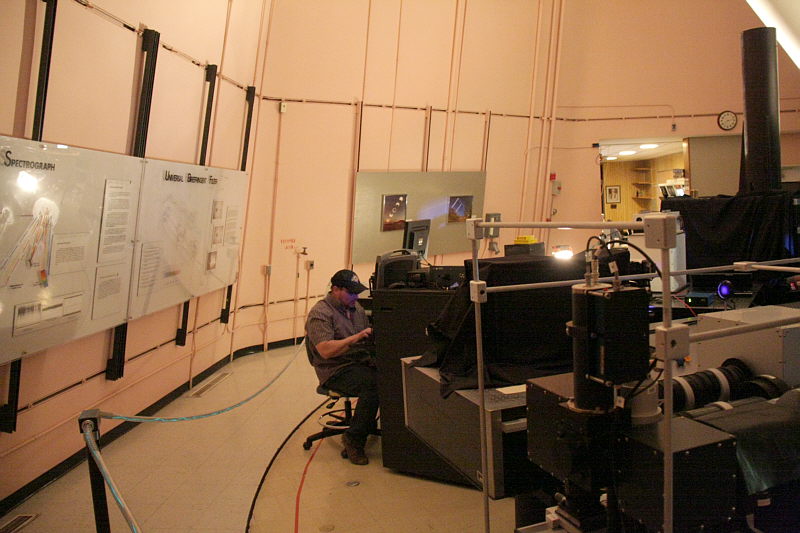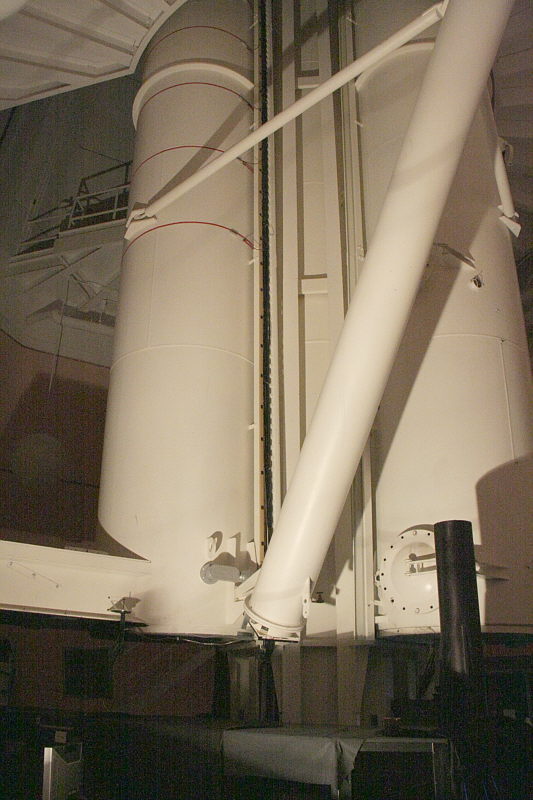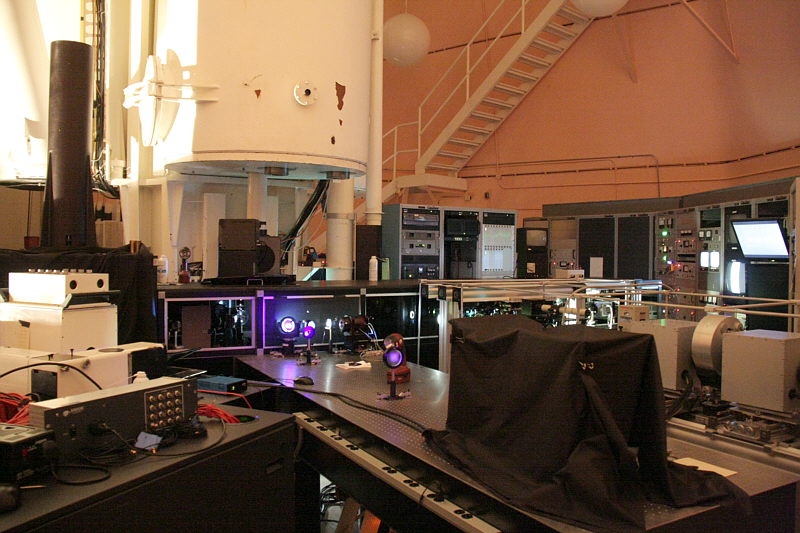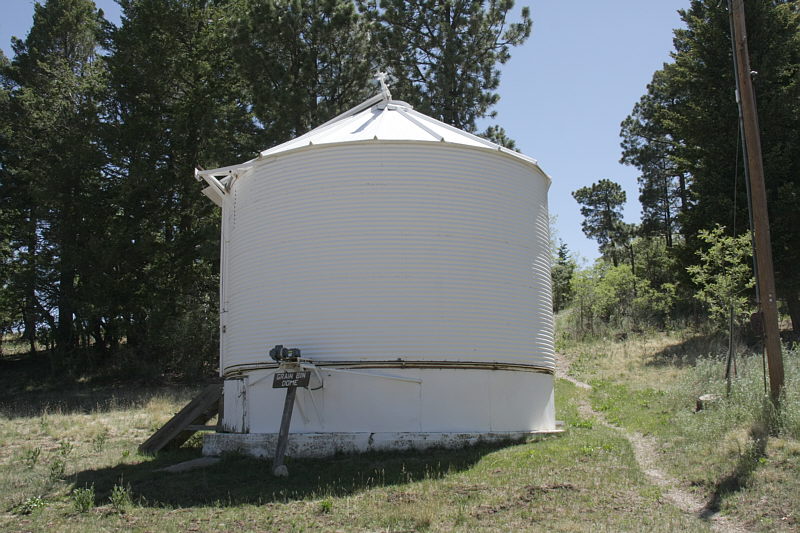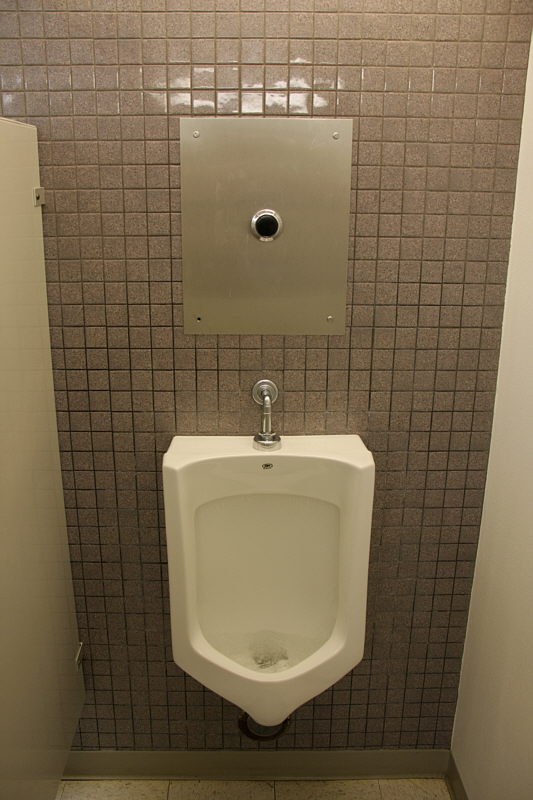Doug Kerr
Well-known member
From many locations in Alamogordo (sadly not from our home), one can see atop a mountain ridge about 10 miles southeast of town a stunning white obelisk:
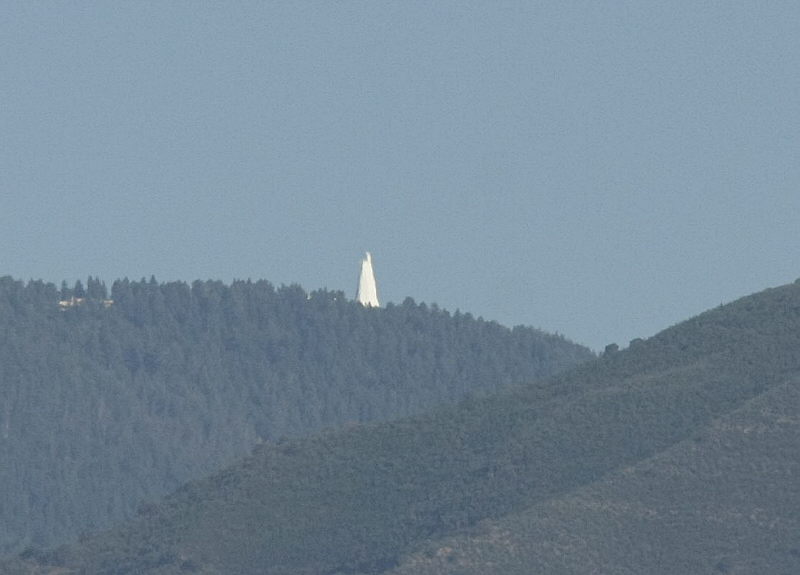
Douglas A. Kerr - The Dunn Solar Telescope from uptown Alamogordo
We are in Mescalero Apache country, but this is not a new-age tipi. It is the external tower of the Dunn Solar Telescope, the major instrument at the New Mexico site of the National Solar Observatory, It is located in the tiny town of Sunspot, New Mexico, on Sacramento Peak, about 10 miles southeast of our house in Alamogordo, at an altitude of about 9250 ft MSL.
This unique telescope has a 329 foot long vertical column, under vacuum (to avert disturbance to the image caused by temperature variations in the air that would otherwise be in the column). The primary mirror, at the bottom of the column, is 64 inches in diameter, and has a focal length of 180 feet.
The overall arrangement is shown in this figure:
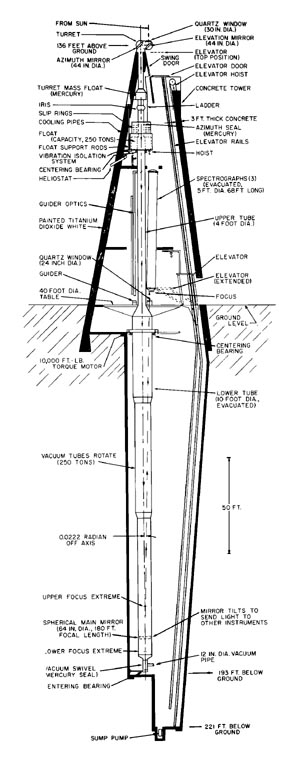
Schematic of the Dunn Solar Telescope
The sun's image is formed about five feet above one of six quartz viewing ports located just off the centerline of the column, about 175 feet above the primary mirror. The mirror is slightly tilted to direct the image to the port currently being used. The port cluster is at the center of a 40-foot diameter circular instrument table.
The sun's image is about 20 inches in diameter. Some of the instruments (such as the major spectroscope) are essentially vertical, and receive the solar image directly. Other instruments have horizontal axes, and receive the solar image via a mirror above the port. One port is devoted to an instrument that aims the telescope and periodically confirms the proper tracking of the sun.
The upper part of the column is housed in a pyramidal tower extending 136 feet above the earth, with concrete walls 3' thick. We see it in this picture:
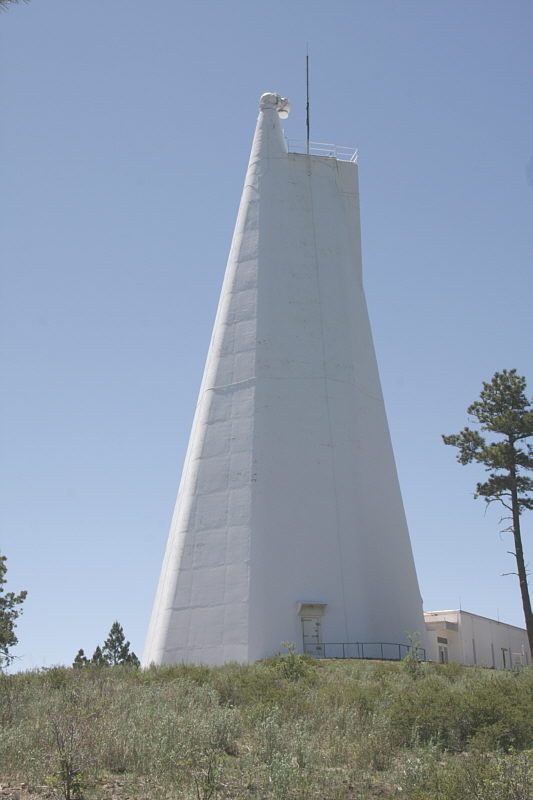
Douglas A. Kerr - The external tower of the Dunn Solar Telescope
The remainder of the column is in a 228' deep underground "silo". The instrument floor is at essentially ground level.
At the top of the tower (and the top of the telescope column) is a rotatable turret, containing two 44" diameter mirrors in sort of a "periscope" arrangement, looking out through a 30" diameter quartz window at the sun. One of the two mirrors (in the sphere on our right) can be tilted to change the aim of the telescope in altitude. The entire turret is rotated to change the aim in azimuth. We see it here:
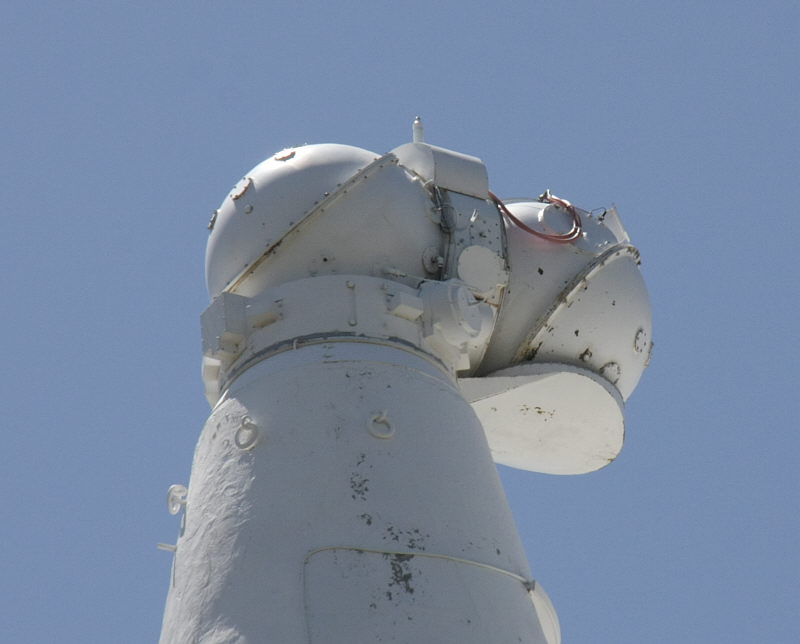
Douglas A. Kerr - Turret of the Dunn Solar Telescope
We think the spoon-shaped member below the altitude sphere is a "pillow" toward which the observation window is directed when the instrument is not in use, so as to protect the surface of the window.
Because of the geometry involved, as the azimuth or altitude are changed, the image of the sun developed by the telescope rotates. This of course would disrupt long photographic exposures or other observations as the sun's position is "tracked".
To compensate for this in a very direct way, the entire telescope proper (including the instrument table and all the observing instruments) rotates (independently of the turret). To allow this, the rotating assembly (weighing about 250 tons) hangs from a mercury float bearing near the top of the tower. It contains 10 tons of mercury. The turret also rotates on its own mercury float bearing. The turret is also under vacuum (in common with the column), and is joined to the column through a mercury rotary seal.
[continued]

Douglas A. Kerr - The Dunn Solar Telescope from uptown Alamogordo
We are in Mescalero Apache country, but this is not a new-age tipi. It is the external tower of the Dunn Solar Telescope, the major instrument at the New Mexico site of the National Solar Observatory, It is located in the tiny town of Sunspot, New Mexico, on Sacramento Peak, about 10 miles southeast of our house in Alamogordo, at an altitude of about 9250 ft MSL.
This unique telescope has a 329 foot long vertical column, under vacuum (to avert disturbance to the image caused by temperature variations in the air that would otherwise be in the column). The primary mirror, at the bottom of the column, is 64 inches in diameter, and has a focal length of 180 feet.
The overall arrangement is shown in this figure:

Schematic of the Dunn Solar Telescope
Courtesy of the National Solar Observatory
The sun's image is formed about five feet above one of six quartz viewing ports located just off the centerline of the column, about 175 feet above the primary mirror. The mirror is slightly tilted to direct the image to the port currently being used. The port cluster is at the center of a 40-foot diameter circular instrument table.
The sun's image is about 20 inches in diameter. Some of the instruments (such as the major spectroscope) are essentially vertical, and receive the solar image directly. Other instruments have horizontal axes, and receive the solar image via a mirror above the port. One port is devoted to an instrument that aims the telescope and periodically confirms the proper tracking of the sun.
The upper part of the column is housed in a pyramidal tower extending 136 feet above the earth, with concrete walls 3' thick. We see it in this picture:

Douglas A. Kerr - The external tower of the Dunn Solar Telescope
The remainder of the column is in a 228' deep underground "silo". The instrument floor is at essentially ground level.
At the top of the tower (and the top of the telescope column) is a rotatable turret, containing two 44" diameter mirrors in sort of a "periscope" arrangement, looking out through a 30" diameter quartz window at the sun. One of the two mirrors (in the sphere on our right) can be tilted to change the aim of the telescope in altitude. The entire turret is rotated to change the aim in azimuth. We see it here:

Douglas A. Kerr - Turret of the Dunn Solar Telescope
We think the spoon-shaped member below the altitude sphere is a "pillow" toward which the observation window is directed when the instrument is not in use, so as to protect the surface of the window.
Because of the geometry involved, as the azimuth or altitude are changed, the image of the sun developed by the telescope rotates. This of course would disrupt long photographic exposures or other observations as the sun's position is "tracked".
To compensate for this in a very direct way, the entire telescope proper (including the instrument table and all the observing instruments) rotates (independently of the turret). To allow this, the rotating assembly (weighing about 250 tons) hangs from a mercury float bearing near the top of the tower. It contains 10 tons of mercury. The turret also rotates on its own mercury float bearing. The turret is also under vacuum (in common with the column), and is joined to the column through a mercury rotary seal.
[continued]

